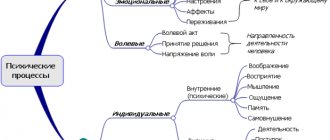The Nobel Prize is not awarded for achievements in the field of psychology. Despite this, the list of psychologists who have received it is quite extensive. Since there is no direct nomination for them, they are awarded for discoveries in medicine, literature and even economics. At one time, Pavlov, Dale and Loewy, Hess, Camus, Sartre became laureates.
In 2009, Professor Nossrat Pezeshkian, a German neurologist, psychiatrist and psychotherapist with Iranian roots, was nominated in the section of medicine and physiology. His brainchild, positive psychotherapy, brought him worldwide fame and many awards. And most importantly, it effectively helps people overcome the conflict situations in which they find themselves every now and then.
What it is
Positive psychotherapy is a direction centered on conflict, which is resolved with the help of the abilities (innate and acquired) of the person himself. It is widely used in both psychology and psychiatry for the treatment of serious personality and behavioral disorders. Rooted in transcultural psychodynamic psychotherapeutic methods. Initially, Pezeshkian called his brainchild differential analysis. The basis is a humanistic point of view.
Pezeshkian positive psychotherapy has been actively promoted in Germany since 1968. But she received recognition much later. In 1996 it was declared an effective and official direction by the European Association of Psychotherapy. Following her in 2008, the same thing was proclaimed from the high rostrum of the World Council of Psychotherapy.
Professor Pezeshkian in the last years of his life (died in 2010) constantly traveled around the world with seminars, symposiums, and public lectures. Conducted interviews with the press, television and radio. To date, more than 40 positive psychotherapy centers have been opened in different countries. For the active implementation of his method, the doctor was awarded many awards:
- Germany's main medical award "Richard-Martin-Price" for quality assurance;
- Ernst von Bergmann Prize;
- Order of Merit of the Federal Republic of Germany;
- International Avicenna Prize for Ethics in Science;
- Nobel Prize nomination.
Many of his books have been translated into Russian:
- "Positive psychotherapy - theory and practice of a new method."
- "Positive family psychotherapy."
- "Psychosomatics and positive psychotherapy."
- “Psychotherapy of everyday life: conflict resolution training.”
- “The merchant and the parrot. Eastern stories and psychotherapy."
Pezeshkian created positive psychotherapy based on transcultural studies of more than 20 world cultures. Therefore, many call his direction innovative and interethnic.
In everyday life you can find different names: positive dynamic psychotherapy, differential analysis, transcultural psychodynamics and others.
Complexities of etymology. Despite the fact that in PP there is a moment that provides the patient with an exclusively positive attitude, the name of the direction has nothing to do with the Latin word “positivus”, which translates as “positive”. It goes back to another Latin concept - “positum”, which means “occurring, actual, given.”
The essence
The whole essence of positive psychology is revealed in the etymology of the term. It works with the problem that exists at the moment and which requires an urgent solution right now. Nosrat Pezeshkian believed that while in other directions they were getting to the bottom of the true causes of the conflict (psychotrauma, disorder), precious time was wasted. Then it is also spent on the possible elimination of provoking factors. And only after that the work begins directly with the problem itself. And during this period it already manages to grow, take root and move into an advanced stage.
Considering these moments to be a clear disadvantage of most psychotherapeutic directions, Nossrat Pezeshkian created positive psychotherapy with a completely different goal - to work directly with the problem situation. Without delving into childhood behavioral patterns and long-standing psycho-traumatic factors, he tried to quickly rid a person of anxious thoughts, depression, nervousness, and personality-behavioral disorders before they became advanced.
This gives excellent and fast results. People get a solution to their problem in just a few sessions, without going deep into the past and without bringing up unpleasant memories in the recesses of memory. While maintaining peace of mind, they also learn to independently get out of difficult situations later.
The main objectives of positive psychotherapy:
- psychotherapeutic aspect - treatment of personal behavioral disorders;
- pedagogical aspect - education and prevention of deviant behavior and social maladaptation of children and adolescents;
- transcultural-social aspect - development and improvement of intercultural consciousness (study of national traditions that influence the behavior and internal state of their bearers);
- interdisciplinary aspect - interaction and integration (as far as possible) of other psychotherapeutic areas under a common auspices.
Such a variety of aspects that specialists have to work with makes it even more attractive.
Positive psychology
Topic 1. Basic constructs of positive psychology, ways to measure them (1 week)
This week we will get acquainted with the basic concepts of positive psychology: happiness, well-being, prosperity and their determinants (factors that determine their level).
We will learn how to measure happiness, subjective well-being, and other positive psychology psychological constructs at the individual and national levels. Let's try out the main tests and questionnaires for ourselves.
Topic 2. Concept, types and effectiveness of interventions in positive psychology (2 weeks)
In week one, we'll learn what we need to do to become happier, more prosperous, and more prosperous people. Let's get acquainted with the main tools of positive psychology (its interventions). In the second week we will try several tools on ourselves.
Topic 3. Positive emotions. Emotional Intelligence (1 week)
We will devote one week to positive emotions. Let's get acquainted with one of the most important theories in positive psychology - Barbara Fredrickson's theory of emotions (broaden-and-built-theory). Let's dive into the concept of emotional intelligence. To increase our level of positive emotions, we will conduct a week-long online training that will help us become more aware of basic positive emotions
Topic 4. Positive attitudes (2 weeks)
In week one we will learn what attitudes are and how they influence a person's happiness, well-being and flourishing. We will pay special attention to those attitudes that lead to positive changes in life.
In the second week we will work on our own installations. Let's learn to “catch” and change those that do not work for our well-being and prosperity.
Topic 5. Positive self-perception. Personality Strengths (1 week)
This week we will explore the topic of self-respect and self-esteem. We will determine the risks of high and low levels of self-esteem and the path to adequate self-esteem. Let's get acquainted with the theory of self-determination by Deci & Ryan, as well as the topic of self-compassion (Neff). We will study the concept of personality strengths (advantages) in positive psychology according to two main models: Peterson/Seligman and Clifton/Buckingham, diagnose ourselves and learn how their use can change our lives.
Topic 6. Flow. Mindfulness (1 week)
The last week of the second module is devoted to two popular concepts in positive psychology: “flow” and mindfulness. We will learn what “flow” is, under what conditions it arises, and how it affects human activity.
In relation to mindfulness, we will focus on the results of scientific research on this phenomenon. You will learn how to measure your level of awareness, raise it, as well as specific ways to apply mindfulness in modern psychotherapy (MBSR, MBCT, ACT programs) and in your own life.
Advantages
The “here and now” principle is actively used in neurolinguistic programming, psychodrama, client-centered psychotherapy, Gestalt therapy, and non-directive hypnosis. And yet, work in these areas takes too long, since they practically do not draw on a person’s internal resources, helping him with external methods. Most of them are focused on eliminating the symptoms rather than the conflict itself.
Given all this, it is not surprising that positive psychotherapy has had such success. Its advantages over other areas:
- conflict-centered rather than symptom-centered;
- short-term: on average, 20 sessions within the framework of psychology and no more than 50 sessions of psychotherapy (taking into account the final recovery from quite severe disorders);
- universality: specialists do not have to look for different methods, techniques and techniques - here everything works to eliminate the conflict almost instantly;
- internationality: this is cross-cultural psychotherapy that integrates the philosophy and intuitive wisdom of the East and the rationalism and science of the West;
- active involvement of the patient in the process of working through their conflicts;
- working with a person as an integral system, and not with his individual thoughts, experiences, conflicts;
- active use of parables and metaphors as a psychotherapeutic tool for working with patients;
- future-oriented, despite the “here and now” principle: positive psychotherapy teaches how to cope with problematic situations in the future.
In addition to all these advantages, this direction also offers methods for working with problems that arise for psychotherapists themselves. For practicing specialists this is a significant advantage. One of the most attractive points for patients is that short-term positive psychotherapy allows you to eliminate conflict in a minimum number of sessions. Where Gestalt therapy takes six months, PP is managed in one and a half months.
Advantages, advantages and features of Pezeshkian positive psychotherapy
First we need to say a few words about the advantages of the Pezeshkian method. They are as follows:
- The method is applicable to any problem
- The method is international
- Parables, metaphors, etc. can serve as a therapy tool.
- A person is considered as an integral system
- The client takes an active part in therapy
- The method is short-term and is designed for 15-20 sessions
- The method is focused on the client's future
One of the most important advantages of positive psychotherapy is that it is accessible to all age and social groups, and that it is characterized by self-help training, a systematic approach and simplicity of language. Thanks to the universality and principle of simplicity, it is possible to use the method in everyday life without any specialized knowledge by absolutely every person. Positive psychotherapy can be considered as a pointer for a person to the right path to harmonize his feelings and thoughts.
A fundamental feature of the Pezeshkian method is also the use by a specialist of various proverbs, parables, and unusual interesting stories in his work. Filled with the wisdom of the East, they are able to help a person look at his problems from a different angle, detached, abstract from subjective experiences and discuss his difficulties with a specialist, being independent from him.
The main emphasis in positive psychotherapy is on a person’s capabilities as the most important way to heal him from suffering and illness. The cause of the problems that arise, according to therapy, are undeveloped or suppressed areas of spiritual interaction between people - because of them, disturbances in life and various conflicts appear.
A positive attitude towards problems leads to the understanding that each of them hides unique opportunities for development, which gives people hope. Good health involves a balance of four main areas of life:
- Body/health
- Work/success
- Contacts/family
- Fantasies/future
Conflicts and diseases are mainly an imbalance of these four areas. Positive psychotherapy focuses on the healthy part of the human body, which contains everything necessary for his recovery, and from which one can draw energy to constructively interact with one’s illness and create favorable changes in life. The therapy itself, coupled with the ability to get out of the current situation on your own, are tools for restoring natural balance.
Another significant advantage of the method is its focus on the future, because it allows you to shape the future by accepting situations in the present. Every person, by taking full responsibility for his life, is able to change his reality. In other words, if a person wants to have something he has never had, he must do things he has never done.
An important principle of Pezeshkian psychotherapy is the principle of the uniqueness of the individual. It says that there can be no standards in life, and the variety of sources of human happiness lies in the fact that you can be happy in the moment “now”, having what you have, without dreaming about “what would happen if” and etc. A person’s ability to see in the present what will make him happy and give him strength on the path to new achievements gives him wisdom and makes him the creator of his own “I”. But changing the current state for the better can only be done gradually, and for this you need to have patience.
Positive psychotherapy helps a person mobilize his hidden reserves to make positive changes. It teaches a person not to resist the world around him, but to accept it as it is. The result will be a positive world- and self-perception, as well as a positive perception of life and the people around you.
Basic principles
Positive psychotherapy is based on three “pillars” - three basic principles. Each of them corresponds to a specific technique.
The principle of balance
It corresponds to the methodology of meaningful differential analysis of personality psychodynamics. The name just sounds so scary, but in reality everything is simple. Positive psychotherapy works with a person’s innate (primary) and acquired (secondary) abilities. The specialist tries to identify and differentiate them at the very first sessions.
Most often, the problem arises due to the fact that the former turn out to be undetected and rebel somewhere from within, while the latter, although lying on the surface, do not find a field of application. The task of the PP is to harmonize and literally “bring out” innate talents and at the same time help to actualize acquired ones.
Principle of Hope
It corresponds to the method of a positive approach in seeing innate and acquired abilities, as well as human capabilities. There are patients whom one or another referral refuses because it does not have the necessary tools to work with it. But here psychotherapists do not have the right not to believe in a successful outcome. Even if the case is unique or advanced, it is necessary to act as if recovery will come tomorrow. Moreover, most of the hope is placed on the internal resources of the patient himself.
The principle of self- and mutual assistance
It corresponds to a metamodel that involves 5 steps. Its goal is to harmonize, adapt and develop any personality in the shortest possible time. And if at the very first sessions the work is carried out mainly with the patient himself, then at the end he is given an algorithm on how to improve the life of not only himself, but also those around him. Moreover, this list is quite impressive: loved one, family, business partner, colleagues, employees of the organization, community. The humanistic orientation of positive psychotherapy manifests itself most clearly in this principle.
However, these principles do not exhaust the methods of positive psychotherapy. In the hands of specialists there is a much richer toolkit.
About abilities
Innate and acquired abilities are key concepts. Moreover, we are talking not so much about talents, giftedness or genius, but about universal human values. For example, from the point of view of the PP, from birth, everyone has two leading abilities (needs) - to know and to love.
The ability and need to know
This is the rational, intellectual essence of man. The left hemisphere of the brain is responsible for it. Firstly, it is more developed among mathematicians, physicists and people in other specialties related to the exact sciences. Secondly, given the integration of cultures, from the point of view of positive psychotherapy, this ability is a priority for residents of North America and Western Europe.
This is what becomes the main focus when resolving a conflict, for example, for a chemist or a German. The therapist invites them to eliminate it through logical thinking. Constant quarrels with your wife? Because of which? Doesn’t cook, doesn’t wash or iron clothes, doesn’t look after the children, demands a lot of money? Are there any positive moments in living together with her? What is more: advantages or disadvantages? With the help of such leading questions and recording clear answers, a comparative table at the end of the first session, the rationalist sees that there is no longer any point in being with such a spouse and the only way out of this situation is divorce (or vice versa).
The ability and need to love
This is the emotional, sensual spiritual essence of a person. The left hemisphere is responsible for it. It is developed among representatives of humanitarian and creative professions, as well as among residents of the East and South America.
If an artist or a Japanese man comes to a positive psychotherapist with a family problem (quarrels with his wife), it is useless to ask them those clear, rational questions that worked so effectively in the previous case. The answers to them will be vague, long and indefinite, which will only further confuse the client about what he wants and delay the session.
This requires other methods and techniques. For example, metaphors or parables. Seeing his own family life as a damaged canvas or dried out paints, the artist will be able to decide for himself whether to revive them or replace them with new ones. Having heard the story about the stupid wife, the Japanese will understand how to fix everything.
"Supermen"
The most difficult thing to work with is people who have a mixture of physiological abilities and cultural and historical predispositions. For example, with a Chinese computer scientist or an English musician. On the one hand, they are driven by the most developed hemisphere. On the other hand, ethnicity. In such cases, it is necessary to identify the dominant of these factors and work with an orientation towards it. In this case, it is necessary to eliminate the eternal internal conflict between these two entities.
This intercultural approach allows positive psychotherapy to work with a person of any nationality, taking into account his ethnic and cultural-historical predispositions. This gives excellent results.
Positive Family Therapy
Rate this post
Such a direction of psychotherapy as positive family therapy was a response to the increasingly complex modern life, the lack of time to think about the most important things, to listen to loved ones, and as a result, the loss of deep contact with them. In fact, the vast majority of couples break up due to the banal inability and unwillingness of partners to listen to each other. Often this skill is simply not developed in people who grew up in families with emotionally cold and not very sociable parents. So what to do? The answer is simple - it's never too late to learn. Learning to listen and feel loved ones is a necessary condition for creating a strong family.
Now let's look at some of the features of positive family therapy. As the name suggests, this is about interacting positively with others and relying on your own positive resources. This type of therapy is aimed at working not so much with specific conflicts of a person, but at revealing the ability of this person (or a married couple and other family members) to see and objectively perceive the situation in the family as a whole. That is, the attention of a specialist in positive family therapy is directed to the family as a single living organism. The value of family comes to the fore here - after all, this is the microcosm in which a person was socialized in childhood, from the life in which he learned his unique baggage of communication skills and behavioral stereotypes. And this is a new microworld in which a person lives in adulthood and in which his emotionally important relationships are concentrated. There are also a number of key principles in this therapy - traditional family values, family council as a way of making important decisions, equality of men and women in the family, voluntary consent of partners to marriage or divorce (if it is inevitable), etc. The main postulates in such therapy are a positive approach to the situation, reliance on the internal resources of each family member, his positive qualities, as well as the psychotherapist’s use of only positive reinforcements when working with clients. From the point of view of positive family therapy , each person has two important abilities - to know and to love. And relying on these two qualities gives a person a powerful impetus to development and faith in his own strength.
Now let’s give a very typical life example. The couple, let's call them Elena and Oleg, have been married for more than ten years and came to a family therapist with a burden of many claims against each other and with the realization of the impossibility of living further in endless conflicts and dissatisfaction with each other. A specialist in positive family therapy , first of all, will set them up for the most important conditions of therapy - talking to each other using a YES statement, as opposed to the usual NO statement. That is, all sorts of “I don’t want him...”, “I don’t like it when she...”, etc. are canceled. They are replaced by phrases like “I would like it if you...”, “I would be pleased if you...”, “I like it when you...” and others like them. In this case, the emphasis is on reorienting the thinking of the spouses: gradually they move away from focusing on each other’s shortcomings and conflict situations. The energy of the spouses’ struggle (and without it no conflict is possible) gradually turns into a search for a positive solution to the problem that suits both. Instead of endless mutual accusations, recognition of the partner’s positive sides is spoken out and, taking into account the reliance on them, everyone’s wishes are expressed. For this purpose, positive family therapy has a special technique - “positive exchange”.
It looks something like this:
Therapist: What would you like to hear or receive from each other? Oleg: I want Elena to listen to me when I share with her my problems at work. Because she never does it, she never supports me at all and doesn't think she should do it. I don’t want her to interrupt me when I tell her about something... Therapist: Wait, Oleg! We agreed that we would use only positive statements, without the “not” particle. Please formulate your desire in this way. Oleg: Okay... I want Elena to show attention to me, be interested in my affairs outside the home, I want her to appreciate how I try for her and for our children. I would be pleased if she praised me sometimes. Elena: Yes, I heard you. You're right, I rarely praise you. Therapist: Now it’s your turn, Elena. Elena: And I want Oleg to spend more time with me and the children. At least on the weekends. And he also wants to do only what interests him, he doesn’t want to go with us to the cinema or the theater, but only for a walk in the park or to the country house to fish... Therapist: Elena, formulate in a positive way how you like It would be nice to spend free time with Oleg. Elena: Yes. I want my interests to be taken into account too, I would be glad if we at least sometimes went together to those films, performances and concerts that are interesting to me. I would be very glad... Often after such a dialogue, both partners have a clearer idea of each other’s true desires and motives, and it becomes easier for them to discuss these things in the future. Usually, after each meeting, the therapist gives the spouses a home task - to do something nice for each other, make a list of each other’s positive qualities, note successful joint actions over a certain period of time, etc. Thus, the therapist teaches the spouses to call a spade a spade and clearly formulate their desires, and also forms in them the habit of positive perception of each other. And against the background of such perception, internal strengths to overcome difficulties together are automatically accumulated.
Positive family therapy is a powerful tool for working with most family problems and can come in many forms. Family psychologist Yulia Varra actively uses her techniques in her practice along with the methods of other effective psychotherapeutic areas. Work with Yulia can take place both within the framework of CONSULTATION and in the form of TRAINING . You can choose the option that suits you best and learn more about Julia Varra and her working methods.
Stages and methods
Stages
In resolving any conflict, positive psychotherapy takes the patient through five mandatory, sequential levels:
- Distancing from the situation that provoked the conflict.
- Its detailed study.
- Situational agreement.
- Verbalization.
- Expanding the boundaries of goals.
All these stages have only one goal - here and now to save a person from a problem, help him cope with it and move on without an aggravating load. All patients, without exception, undergo this regimen. Regardless of what they came with - an ordinary domestic quarrel (interpersonal conflict) or serious behavioral deviations (mental disorder).
Methods
At these stages, psychotherapists use different techniques, techniques and methods to achieve the goal at each specific level. Some of them are universal and are actively used in almost all areas of psychology, pedagogy, and psychotherapy:
- question-answer technique;
- speaking;
- visualization;
- identifying current abilities using the survey method.
But in the arsenal of positive psychotherapy there are also specific techniques and techniques developed specifically for it:
- formalized diagnostic interview with closed questions;
- stories, fairy tales, parables;
- metaphors;
- multicultural approach;
- complementary approach strategy;
- a selection of examples of such conflicts.
Techniques and exercises
Positive psychotherapy is also good because many of its techniques and exercises can be used independently to eliminate minor internal disagreements. They can be used in moments of unbearable fatigue, the emergence of interpersonal conflict, obsessions, or the awakening of internal complexes. Judging by the reviews, when done correctly they give excellent results.
Sanogenic thinking
An excellent exercise for those who like to blow every problem out of proportion and see only the bad in everything. How to do it: As soon as any conflict occurs, an unpleasant situation is created, something good needs to be considered in it. Sometimes this can be incredibly difficult, but the effectiveness of this method will not take long to show itself.
Moreover, this also applies to physiology. For example, your heart sank. It would seem, what is the advantage of this? From the point of view of positive psychotherapy, any pain (both physical and psychological) is a signal to take timely measures to treat it. The sooner this is done, the fewer negative health consequences there will be in the future. Most often, this exercise is prescribed to hypochondriacs.
Perfect day
Positive psychotherapists recommend performing this exercise, if possible, once every 1-2 weeks for those who are dissatisfied with their life, are mired in routine, and are forced to constantly do what they need, and not what they want. It also helps cope with depression and internal complexes.
The task is as follows. Make a detailed plan for your ideal day - the way you would like to spend it, without regard to anyone’s opinion and guided solely by your inner desires. But you need to do this in as much detail as possible, as if you were creating a routine for your normal day tomorrow. That is, you need to indicate what you would like to eat for breakfast, where you will go, who you will call. The next step is probably already clear: live this day as you planned it, as much as possible.
Proverbs
For every life situation, the inhabitants of the East have their own wise parable, which teaches how to act correctly in a particular conflict and who is really to blame. If every married couple had a volume of such allegorical stories in their library, there would be much less quarrels.
For example, a typical situation for a modern family: both the wife and husband believe that they both fulfill their assigned responsibilities 100%. The first cooks borscht and raises children, the second brings money. However, they do not provide any mutual assistance to each other. The parable “Distribution of Responsibilities” comes in handy here, which tells that this state of affairs led the spouses to the fact that their house burned down.
How to use this technique yourself? In the age of the Internet, you don’t even have to buy a collection of parables. If you are faced with a problematic situation, you type it into the search bar (boyfriend cheated on you, spreading rumors, bad mother, unfair boss), and next to it - the word “parable”. You will be surprised how many instructive stories the East has created on your topic. Read, learn, and heal.
Positive names and labels
Judging by the reviews, the exercise is incredibly effective, although difficult. The task is to remove from your environment all speech clichés with a negative emotional connotation. This should apply to both small things and more significant moments.
You will have to work out many nuances: looking in the mirror, you cannot call yourself old and fat - only wise and appetizing; the boss is not a boor and a tyrant, but a person with a very complex, but original character; and you don’t have a weak ego—it’s just that a strong ego is sleeping. You can start by pronouncing it out loud, and then work on mental formulations.
Pezeshkian method of positive psychotherapy
To begin with, it is worth saying that the use of the Pezeshkian method of positive psychotherapy and its principles is not limited to psychotherapy or counseling, but also extends to other areas and is used in education, personnel management, business, health prevention, conducting all kinds of training, as well as in coaching .
The idea of the method says that a positive image of a person stems from the fact that every person from birth has two basic abilities: the ability to know and the ability to love. Both of them are closely interrelated with each other: the development of one contributes to the development process of the other and facilitates it. This is the main statement on which the idea of a person is built in positive psychotherapy. By nature, a person is kind and subconsciously strives for good.
Also, Pezeshkian positive psychotherapy is based on the belief that all people are endowed with everything they need to live a happy life. Everyone has access to an inexhaustible source of life, which can be used for their individual development and personal growth.
All the most valuable things are inside a person and, like seeds, ripen throughout life - this is the Creator’s plan. The scientist said that every person is a mine full of precious stones. And one of the tasks is to search for this valuable treasure and lift it out from the depths of the human soul. It is necessary to show this treasure to the world through the use of talents and natural inclinations, thanks to which complete self-realization of a person is possible. The main satisfaction in life is fulfilling your life purpose.











